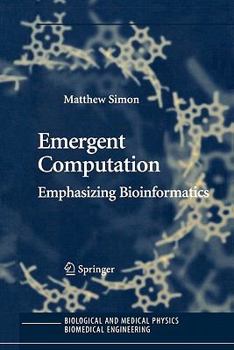Emergent Computation: Emphasizing Bioinformatics
Select Format
Select Condition 
Book Overview
Emergent Computation emphasizes the interrelationship of the different classes of languages studied in mathematical linguistics (regular, context-free, context-sensitive, and type 0) with aspects to the biochemistry of DNA, RNA, and proteins. In addition, aspects of sequential machines such as parity checking and semi-groups are extended to the study of the Biochemistry of DNA, RNA, and proteins. Mention is also made of the relationship of algebraic topology, knot theory, complex fields, quaternions, and universal turing machines and the biochemistry of DNA, RNA, and proteins.
Format:Paperback
Language:English
ISBN:1441919635
ISBN13:9781441919632
Release Date:November 2010
Publisher:Springer
Length:423 Pages
Weight:1.35 lbs.
Dimensions:0.9" x 6.1" x 9.2"
Customer Reviews
5 customer ratings | 5 reviews
There are currently no reviews. Be the first to review this work.





















